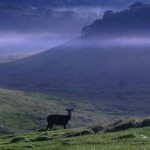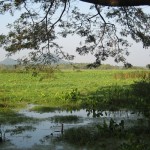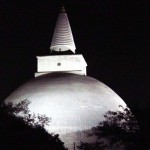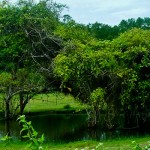Yala is among the oldest and best known National Park in Sri Lanka. It is about 1297 sqkm or 129,700 ha. It is the largest accumulation of protected areas in the country. The diverse ecosystems ranging from Moist Monsoon Forest , to Dry Monsoon Forests, Semi Deciduous Forests, Thorn forests, Grasslands, fresh water & marine wetlands, and sandy beaches, possesses a large number of important plant species and smaller animals.
Kumbukkan Oya in the North East and Menik Ganga and tributaries on the West, flow through the Park providing a source of water to the animals even during the driest months of the year.
Yala West (Ruhuna) National Park is well recognized as one of the best parks in the world to observe leopards. The park covers an area of over 100,000 hectares and is divided into five blocks.
Block one is the most visited area since it contains the highest density of leopards. Yala West consists of scrub jungle, brackish lagoons and stunning rock monoliths scattered throughout the park, its eastern edge is bounded by the South East coast. Yala has well over 200 leopards, probably the highest density anywhere in the world. It is also thought that Sri Lankan leopards are a distinct sub-species from their Indian neighbors, and the largest leopards in Asia.
There is also a substantial elephant population along with Spotted deer, Sambar, Wild buffalo, Sloth bear, Jackal, Mongoose, Pangolins and Crocodiles. The bird life comprises over 120 species, and ranges from Lesser Flamingos to Paradise Flycatchers, Crested Hawk Eagles, and Black Bitterns. Outside of the park are several other fascinating birding locations, including the ancient hermitage of Sithulpahuwa, Debarawewa wetland and Palatupana saltpans. The coastline forms a major nesting ground for marine turtles























